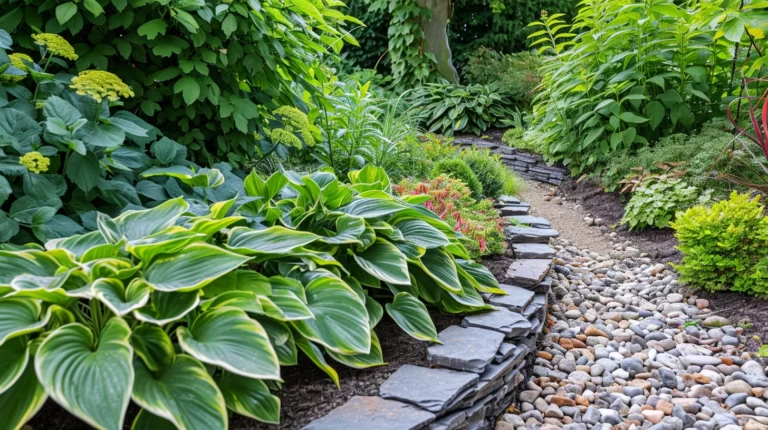When Gardening Goes Wrong: Funny Tree Edging Stories
I am sure we can all agree that tree edging can make or break a garden’s aesthetic, but what they don’t often share are the laugh-filled blunders behind the scenes. I’ve spent years mastering the art of tree edging, and along the way, I’ve had my fair share of comedic mishaps.
Continue reading and I’ll take you through a series of my most memorable follies.
From the Great Circle Debacle, where my quest for the perfect curve turned into an abstract art piece, to the Overzealous Topiary Attempt that left my hedges looking like a chessboard.
My funny tree edging stories are packed with practical know-how and detailed cautionary advice to keep your gardening adventures on track—or at least give you a good chuckle when they veer off.
Continue Reading to Understand These Key Points:
- Tree edging is important for a garden’s aesthetic and requires attention to detail and precision.
- Hedge trimmers can present unexpected challenges in gardening, emphasizing the need for caution and proper technique.
- Topiary art requires patience, incremental adjustments, and a steady hand for three-dimensional shaping.
- Dealing with tree roots requires gentle excavation and adapting the edging technique to preserve essential roots while removing invasive ones.
The Great Circle Debacle
During my attempt to create a perfect circular edge around the old oak tree, I didn’t anticipate becoming the laughingstock of the neighborhood. I’d measured the diameter meticulously, calculating the circumference using the formula I remembered from geometry class.
I staked out my string at the tree’s base, ensuring it was taut and evenly spaced as I traced what I believed to be a flawless arc in the dirt.
I dug in with my half-moon edger, confident in my technique. I’d read up on the correct angling and depth for creating a crisp edge that wouldn’t only look sharp but also discourage grass from creeping into the mulch bed.
My movements were deliberate, the blade sinking into the soil with satisfying precision. I made sure to remove the sod in manageable sections, shaking off the excess dirt before disposing of them in my compost pile.
But when I stepped back to admire my handiwork, the circle was more of an erratic oval. It seemed my string had shifted, but I’d been too engrossed to notice. I couldn’t help but chuckle at my oversight.
The neighbors might’ve had a good laugh, but I took it in stride, learning a valuable lesson in humility and attention to detail.
Hedge Trimmer Hijinks
Occasionally, my garden escapades involve power tools, and that’s where my hedge trimmer hijinks come into play. I’ve learned that even the most robust hedges can present unexpected challenges, and even a seasoned gardener can have a good chuckle over a hedge trimmer gone rogue.
To keep the humor alive and share some practical insights, here’s a quick table detailing my top five hedge trimmer moments and the lessons they’ve imparted:
| Hijink | Lesson Learned |
|---|---|
| The Great Topiary Tumble | Always keep the ladder stable. |
| The Unplanned Sculpture | Measure twice, trim once. |
| The Power Cord Sever | Keep the cord over your shoulder. |
| The Overzealous Trim | Less is more—don’t overdo it. |
| The Mismatched Sides | Use guides for evenness. |
Each of these incidents taught me something valuable about hedge maintenance.
For example, the Great Topiary Tumble was a stark reminder to always ensure my ladder was on solid ground before climbing. And when I accidentally cut the extension cord—yes, it happened—I realized the importance of keeping it away from the blades.
The unplanned sculpture, a hedge that ended up looking more like an abstract art piece, showed me the significance of having a clear design in mind before starting. Remember, hedge trimming isn’t just about keeping things tidy; it’s about safety and precision as well.
The Overzealous Topiary Attempt
Despite my previous hedge trimmer lessons, I couldn’t resist trying my hand at an ambitious topiary project that quickly spiraled into a comical disaster. My goal was to sculpt a majestic lion, king of the garden.
I started with a detailed sketch and the right tools, but as the hours ticked by, my lion looked more like a startled house cat than a regal beast. I trimmed a bit here and snipped a bit there, but the symmetry was elusive.
I’ve learned that topiary art requires not just a steady hand but an eye for three-dimensional shaping. It’s about incremental adjustments and stepping back frequently to assess from various angles.
My initial cuts were too deep, and without foliage to spare, I ended up compromising the entire structure. The mane, which should have been lush and bold, ended up uneven and patchy.
In practical terms, the trick is to start with the larger shapes and refine as you go, not to dive straight into details. Patience is key, as is the willingness to let the plant grow back if you’ve cut too much.
This humbling experience serves as a perfect segue into the next tale of green-thumbed ambition, where we’ll explore a ‘root awakening: an edging epic’.
Root Awakening: An Edging Epic
While attempting to give my garden a crisp edge, I hadn’t anticipated the tangled network of roots lurking just beneath the surface. My trusty half-moon edger, typically a reliable ally, met its match against the gnarly underground maze.
Focused on achieving that perfect line between grass and garden bed, I found myself in a battle of wits and wills with nature’s intricate design.
Here’s how I tackled the challenge:
- Assess and Plan: Before diving back in, I paused to assess the root structure, determining which roots belonged to my prized plants and which to invasive weeds.
- Gentle Excavation: Using a hand fork, I carefully excavated around the roots, preserving the essential ones while cutting through the unwelcome invaders.
- Root-Friendly Edging: I adapted my edging technique, creating gentle curves around the important roots to maintain both the health of my plants and the clean edge I desired.
This root awakening taught me that patience and respect for the natural layout of my garden were crucial. The result? A beautifully edged garden that flowed with the land, rather than against it. Sometimes, the beauty of gardening is found in the unexpected detours.
Final Thoughts
As I stand back, surveying the gardenscape that bears the scars of my edging escapades, a mix of pride and chagrin washes over me. Each misshapen hedge and eccentric circle tells a story—a lesson learned the hard way.
But for now, as the sun dips low, I wonder what fresh follies await. The garden, after all, is a master of surprise.






